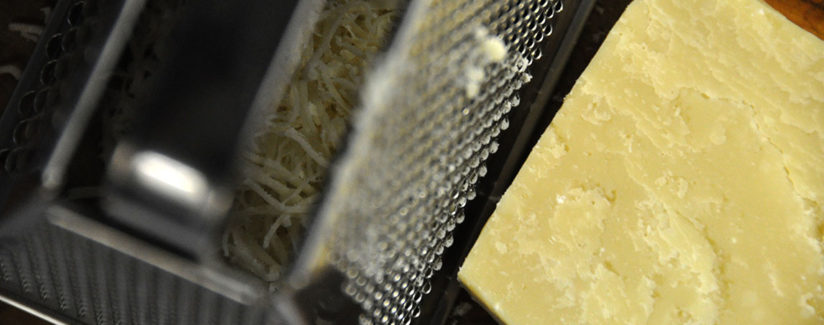
Is Wood Pulp Being Added to Your Food?
A recent news story has grated some cheese lovers. That Parmesan cheese you’re sprinkling on your favorite pasta dishes may not be what it appears, according to the U.S. Food and Drug Administration (FDA). The agency found wood pulp in some Parmesan cheese, but how concerned should consumers be? Is wood pulp commonly used in foods?
Best Food Facts registered dietitian Sarah Downs explains that wood pulp, or cellulose, is a safe food additive and is often added to some grated cheeses to stop the strands from sticking together. Typically, a very fine powdered cellulose (not wood pieces like many think) is used in shredded cheese and can come from a variety of plant sources. It’s not derived from wheat, rye or barley so it’s acceptable for those following a gluten-free diet. The additive is not harmful and is approved for use in foods by the FDA. The acceptable amounts approved by the FDA are between two and four percent cellulose, but eating cheese with more than this amount is not harmful. The bigger concern is whether consumers are actually getting what they’re paying for.
If you’re curious about whether food in your pantry contains cellulose, here’s what to look for on the label. Another term used for wood cellulose is microcrystalline cellulose (MCC). Cellulose gel and cellulose gum are other descriptions of wood cellulose. A more technical term of carboxymethyl cellulose could also appear on an ingredient list.
The information below was originally posted on July 1, 2014.
Cellulose is the basic building block of the cell walls of all plants and is considered a complex carbohydrate. But “cellulose is cellulose” whether it comes from wood pulp or celery, according to the executive director of the Center for Science in the Public Interest in a 2011 Wall Street Journal article. Various forms of cellulose are generally recognized as safe (GRAS) food substances, according to the U.S. Food and Drug Administration.
Small cellulose particles give a smooth consistency and stickiness to products such as salad dressings, barbecue sauces and ice cream. Longer fiber lengths provide structure and a firmer texture to baked goods. Cellulose also helps capture and retain moisture and keeps products from seeming dry.
Joanne Slavin, PhD, RD, professor of food science and nutrition at the University of Minnesota, told the Wall Street Journal that cellulose can serve as a good source of dietary fiber for people who don’t eat enough fruits, vegetables or whole grains. The USDA’s dietary guidelines recommend young women get 28 grams of fiber daily and young men consume 38 grams.
Dr. Slavin:
Cellulose is a form of insoluble fiber. It is found in all plants, but wood is a particularly rich source of cellulose. When you eat vegetables, like carrots or whole grains, you consume cellulose. Cellulose is not digested and absorbed, but may be fermented in the colon. Since most of it survives transit through the gut, it is known to increase stool weight and speed transit.
My PhD research was on the physiological effects of a wood cellulose in humans. Most was not fermented in the gut, it had no negative effects on mineral absorption, and did increase stool weight.
Fiber is a shortfall nutrient (which means we’re not getting enough of it) in the U.S., so there is a need to increase intake of fiber. Of course, we dietitians prefer that consumers get fiber from vegetables, whole grains, legumes, and fruits, but purified cellulose can also be added to foods to increase the fiber content. Usually this will expand the food as fiber binds water, so it would be called a filler, but most folks need lower calorie foods so use of fillers would be a benefit.
The FDA and USDA set limits on the amount of cellulose certain foods can contain and powdered cellulose can be used in foods labeled “organic” or “made with organic” ingredients.
The image “Parmesan” by cyclonebill is licensed under CC BY-SA 2.0.



























